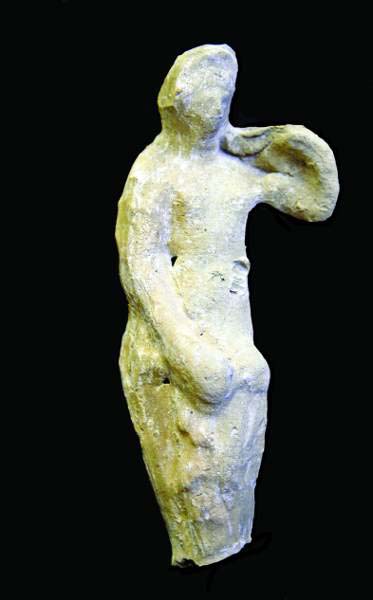Strata: Aphrodite Uncovered in Christian City

As Christianity was becoming the dominant religion of the Roman Empire, some of the pagan residents of Hippos-Sussita continued their devotions to Aphrodite. Three clay figurines of the Greek goddess of love and fertility, dating to the fourth century C.E., were discovered during the tenth excavation season at Hippos-Sussita.
Hippos-Sussita sits on a mountaintop nearly 1,150 feet above the Sea of Galilee. The city was Jewish and then pagan before becoming Christian. Head excavators Arthur Segal and Michael Eisenberg of the Zinman Institute of Archaeology at the University of Haifa began digging there after a 1990 BAR article highlighted the possibilities of the yet-untouched site.a
The figurines of Aphrodite, which stand upright at 9 inches tall, were made in large numbers from molds. The goddess stands in a pose known as Venus pudica, or “the modest Venus,” so called because she is depicted with the palm of one hand covering her genitals (Venus is the Roman counterpart of Aphrodite). The figurines would have been offered to Aphrodite in a temple by women hoping for a safe birth, or perhaps kept above their beds.
Excavators found the figurines in the southeastern corner of the city’s forum district. Because the figurines were found intact, researchers suggest that devotees of Aphrodite may have hidden them carefully from Roman or Christian authorities. The finds show that the cult of the goddess lingered on into the Christian period.
Already a library member? Log in here.
Institution user? Log in with your IP address.

